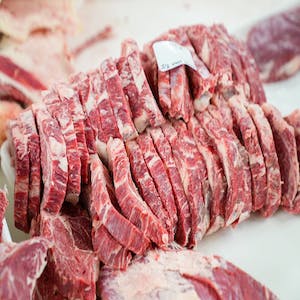Reduction of the microbial load in meat maturation rooms with and without alkaline electrolyzed water fumigation

Submitted: 20 December 2022
Accepted: 13 February 2023
Published: 1 August 2023
Accepted: 13 February 2023
Abstract Views: 568
PDF: 165
HTML: 10
HTML: 10
Publisher's note
All claims expressed in this article are solely those of the authors and do not necessarily represent those of their affiliated organizations, or those of the publisher, the editors and the reviewers. Any product that may be evaluated in this article or claim that may be made by its manufacturer is not guaranteed or endorsed by the publisher.
All claims expressed in this article are solely those of the authors and do not necessarily represent those of their affiliated organizations, or those of the publisher, the editors and the reviewers. Any product that may be evaluated in this article or claim that may be made by its manufacturer is not guaranteed or endorsed by the publisher.
Similar Articles
- Federica Savini, Valentina Indio, Federica Giacometti, Yitagele Terefe Mekkonnen, Alessandra De Cesare, Laura Prandini, Raffaele Marrone, Alessandro Seguino, Marika Di Paolo, Valeria Vuoso, Federico Tomasello, Andrea Serraino, Microbiological safety of dry-aged meat: a critical review of data gaps and research needs to define process hygiene and safety criteria , Italian Journal of Food Safety: Vol. 13 No. 3 (2024)
You may also start an advanced similarity search for this article.

 https://doi.org/10.4081/ijfs.2023.11109
https://doi.org/10.4081/ijfs.2023.11109




